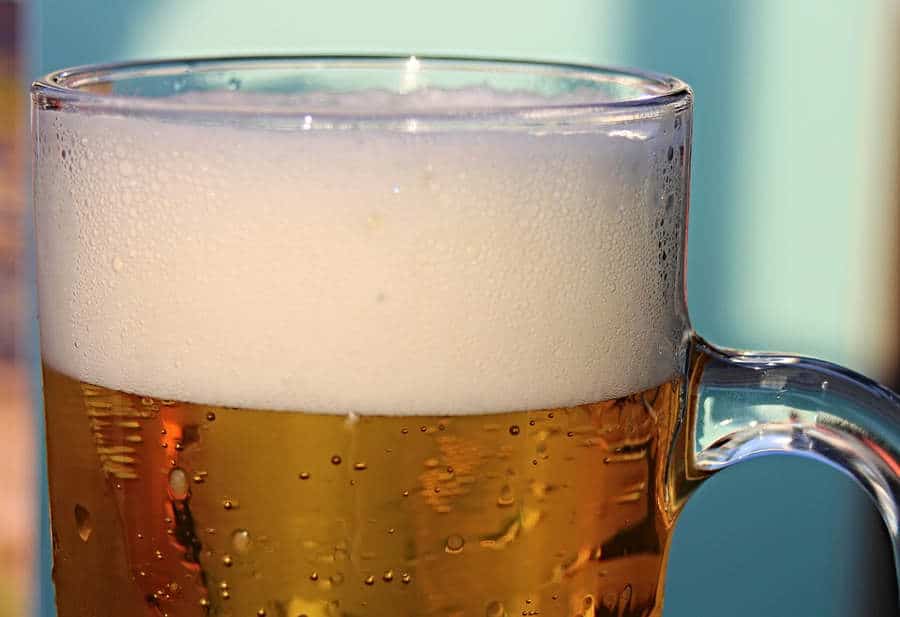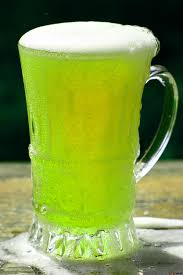When it comes to beer, the head (or foam) matters. I’ve lived in many different places and the preference for how much foam should be on top of a beer varies, what everyone can agree on is that too much foam ruins the beer experience. So, what can we do to overcome this issue in brewing our own beer at home?
What gives homemade beer too much foam and why does it happen?
If your home-brewed beer is producing excess foam it is down to one of three reasons. The most likely culprit is over-carbonation, due to excess sugar in the bottling process. Other causes could be an infected beer, identified by a tart taste or the specific gravity is too high due to fermentation.
Most novice brewers come across at least one of these problems and they are easy to overcome when you know about them. I’m going to go over the issues in more detail in this article and to explain exactly how to overcome each one. For perfect beer, every time, read on!
What is over-carbonation and what causes it?

Over-carbonation for most home brewing projects comes from an excess of sugar added in the bottling stage of brewing. There are some fixes as will be discussed below.
Most modern beers require a process of carbonation. This happens at the very last stage of the brewing process and takes part in either bottles or a keg. It is more common among amateur or new homebrewers to use bottles.
There are two main ways to carbonate your beer, which just means allowing carbon dioxide to be added to the beer. The first is known as natural carbonation and the other as forced carbonation.
Natural carbonation is what happens when a beer is allowed to partially or fully ferment before being put in a storage vessel before adding sugar.
For brewers who use holding vessels or casks, they will allow the beer, known as wort at this stage, to almost fully ferment but before it does they store it in the vessel. As fermentation hasn’t been allowed to completely finish, the beer is naturally carbonated in the cask.
Another, more common way, is to naturally carbonate beer in bottles. The fermentation process is allowed to happen completely before the beer is stored into bottles and sugar is added to stimulate the production of CO2.
As the bottles are securely sealed the resulting CO2 is absorbed into the beer.
Forced carbonation is associated with beer that is stored in a keg. It is achieved by actively introducing CO2 into a sealed container of beer.
First, you have to allow the wort to fully ferment, then you chill it before pumping in CO2 to the desired pressure. After a short period, the CO2 is fully absorbed by the beer contained in the keg.
How to fix over-carbonation in bottles?
FIX #1: Chilling the beer
If you find that your beers are too foamy, actually cooling them right down to around 36°F/2.2°C. Then pour the beer into your glass and allow it to slowly reach a more ideal drinking temperature.
FIX #2: Use a wide brim beer glass.
The issue here is an excess of CO2. By pouring your beer into a wide-brimmed beer glass at an angle you will allow more carbon dioxide to escape more quickly. You’ll probably still get a fairly thick head, so just allow the foam to subside over a few minutes. It’s going to happen much more quickly than if you used a narrower beer glass.
FIX #3: Open your beers and recap them using the same cap
Often the issue is with the build-up of CO2 in the neck of the bottle. If you can release this and then reseal the beers you can avoid the same over-foaming in future dégustations. If the problem is really excessive then you should allow the caps to sit on the top of the opened bottles for a few minutes before resealing them, chilling the bottles beforehand also helps.

How to fix over-carbonation in a keg?
It is much harder to over-carbonate a keg in many respects but far easier to reduce the effects of over-carbonation.
Over-carbonation of a keg will occur when too much CO2 has been introduced into a keg. As the CO2 is too abundant and has nowhere to expand (it’s a gas, if my secondary school science teacher was right!) it will exert a higher pressure within the keg. This can lead to very foamy beer.
BEST FIX: Bleed off the pressure
This is really the only fix to this problem and it involves allowing enough CO2 to escape the keg so that you reach the desired level of carbonation as set by the producer of your beer recipe. As a general rule, 20 PSI for 2-3 days should be adequate to fully carbonate your beer, then reduce the pressure to about 10-12 PSI for dispensing the beer. Also, make sure that your beer line is long enough to balance the gases as it flows into the glass. At least 5 feet is recommended depending on your altitude.
A keg will have a pressure release valve and you can measure the internal PSI through using this. Once this internal pressure issue is solved, your beer will pour perfectly.
For more information on kegging your beer check out my full article on this topic here.
What does it mean when my beer is infected? How does it affect carbonation?

An infected beer doesn’t mean that it is diseased. It’s not going to hurt you but I can understand if you might not want to drink that particular batch after reading that word.
When we refer to a beer as being “infected” we mean that there has been some contamination with additional yeast you didn’t want or bacteria. This infection just makes your beer miss the desired mark you were aiming for in your recipe.
Infection can lead to off-flavors such as sour milk, vinegar, or, believe it or not, a horsey note. Basically, the taste just isn’t up to the standards you wanted. There are many other causes of infection which aren’t really in your control to fix when brewing so it’s not worth our time going over them here. Suffice to say, that infection of your beer can lead to over-carbonation. This is mainly when dealing with wild yeast strains that will continue to ‘eat’ fermentable sugars that regular yeast strains will not. Thus, more CO2 than expected is produced.
Unfortunately, if you’ve got this far and your beer tastes too bad to drink then it is too late for this batch. However, if you can catch a possible infection in the process of making your beer then you could make a sour beer instead.
So, no fix for a purely infected beer I’m afraid. Before you make another batch make sure that you have fully sterilized all your equipment, including your bottles.
Getting a vinegar taste in your beer? Check out another article all about this.
Making sure fermentation has finished before bottling or kegging your beer
It’s important to make sure that your beer really has finished its fermentation process before you bottle or keg your beer. The only real way to know this is to take a specific gravity reading and to ensure that you have reached your target final gravity reading.
How do I find out the specific gravity of my beer?

First of all, what is specific gravity when it comes to beer?
Specific gravity refers to the density of a liquid compared to water. Being an old pilot, I used to use this idea in the calculation of fuel weight a lot. For beer, however, it helps us determine different stages in the brewing process. In particular, it tells us when fermentation has fully occurred.
If your specific gravity in your beer has not changed over a period of a few days then it has finished fermentation. If you bottle your beers before this process is over then you will get over-carbonation and possibly exploding bottles.
You can find the specific gravity of your beer by using a device called a hydrometer or a refractometer. The former displays the specific gravity based on its own density and how much liquid it displaces when in your beer wort. The latter works by measuring how much light is refracted through the beer wort. In order to successfully brew beer, you should invest in one of these devices.
Alternatively, you can leave the fermentation process a little longer than instructed to be sure it has fully occurred. Fermentation is simply yeast feasting on sugars which have been released in the brewing process. When they have done their job your beer will rest in the same state until you bottle it or put it into some other storage container.
Can I fix over foaming or do I need to start again?
As discussed, if your beer is over-carbonated due to an excess of priming sugars in the bottling stage, you can chill it or uncap it and allow the CO2 to escape or use a wider glass to overcome the problem.
If your beer tastes funny and is in fact infected, you might as well cut your losses and start again. Don’t forget that you can use that beer as part of an insect repellent, so it’s not a complete loss. Check out my article on 26 uses for stale beer, it’s crazy what you can do with old beer!
If your specific gravity was too high at bottling then you can use the same methods as with over-carbonation due to excess priming sugar. Do, however, be aware of exploding bottles. If this happens, consider the quality of the bottles you use next time always making sure they were designed to be used for beer as it’s stored under high pressure.
Related Questions
Why does beer explode when you hit the top?
When you tap a beer to play a prank on a friend what you doing is sending shock waves down through the beverage causing tiny bubbles. These bubbles pulsate then because the pressure is too great and shatter. As the surface area is larger CO2 rushes in and the bubbles begin to rise, causing a beer volcano.
How do you know when beer goes bad?
If a beer smells or tastes strange, it’s gone bad. Also if the color of the beer has changed this could also indicate a problem. For most low alcohol strength beers they will also become flat or decarbonated after about 6 months. Higher strength beers actually age well in the bottle.





